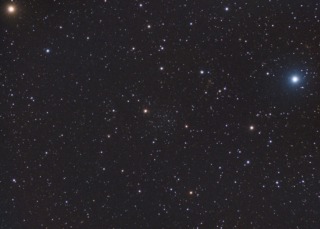
- Constellation: Serpens
- Right Ascension: 15:16:05.25
- Declination: -00:06:41.8
- Distance: 75,600 ly
Palomar 5 is a extremely faint globular cluster located in Serpens. Originally discovered in 1950, it was originally classified as a dwarf galaxy. Ir is also in the process of being torn apart by our Milky Way galaxy. Barely visible in this image, it is the faint star field located between the two brighter stars in the lower middle of the image.
- Details
- Category: Globular Clusters
- Telescope: Explore Scientific 127 Refractor
- Camera: ZWO 2600 MM
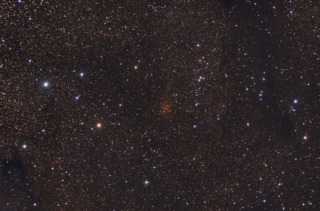
- Constellation: Sagitta
- Right Ascension: 19:18:02.1
- Declination: +18° 34.3′
- Distance: 19,200 ly
Palomar 10 is a faint globular located in Sagitta. Discovered in 1955 from the Palomar Sky Survey
- Details
- Category: Globular Clusters
- Telescope: Explore Scientific 127 Refractor
- Camera: ZWO 2600 MM
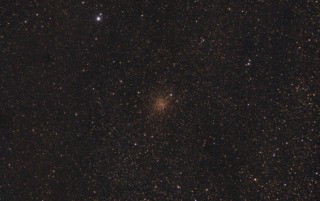
- Constellation: Serpens
- Right Ascension: 18h 10.7m
- Declination: –07° 12.5′
Pal 7 is one of several globular clusters discovered during the Palomar Observatory Sky Survey conducted in the 1950's. Pal 7 is heavily obscured by interstellar dust. Pal 7 is one of the brighter of the Pal series.
- Details
- Category: Globular Clusters
- Telescope: Explore Scientific 127 Refractor
- Camera: ZWO 2600 MM
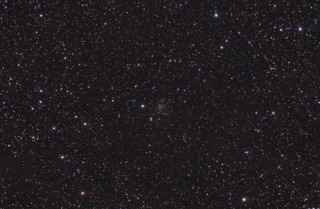
- Constellation: Aquila
- Right Ascension: 19h 45.2m
- Declination: –08° 0.5′
- Distance: 42,400 ly
The Pal 11 globular cluster is a one of several Palomar clusters discovered in the 1950's Palomar Sky survey. These clusters are either heavily obscured by dust such as Pal 11, or located farther out in the Milky Way's halo. Pal 11 is located in the constellation of Aquila.
- Details
- Category: Globular Clusters
- Telescope: Explore Scientific 127 Refractor
- Camera: ZWO 2600 MM
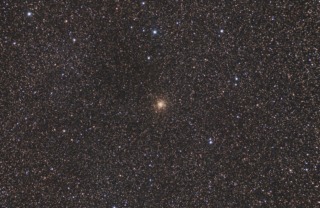
- Constellation: Aquila
- Right Ascension: 19h 11m 12.1s
- Declination: +01° 01′ 49.7″
- Distance: 24,000 ly
NGC 6760 is a globular cluster located the the rich star fields of Aquila.
- Details
- Category: Globular Clusters
- Telescope: Explore Scientific 127 Refractor
- Camera: ZWO 2600 MM
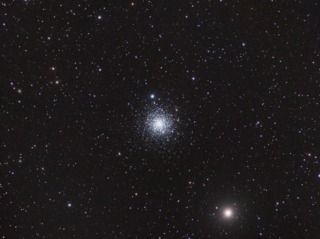
- Constellation: Capricornus
- Right Ascension: 21h 40m 22.12s
- Declination: –23° 10′ 47.5″
- Distance: 27,000 ly
Messier 30 is a globular cluster located in the constellation of Capricornus. Due to its retrograde motion in respect to the general flow of the Milky Way galaxy, it is thought to be c captured cluster from another satellite galaxy. Having under gone core collapse, its central section is dense with stars. A class V globular cluster.
The bright star is Zeta Capricorni.
- Details
- Category: Globular Clusters
- Telescope: Explore Scientific 127 Refractor
- Camera: ZWO 2600 MM